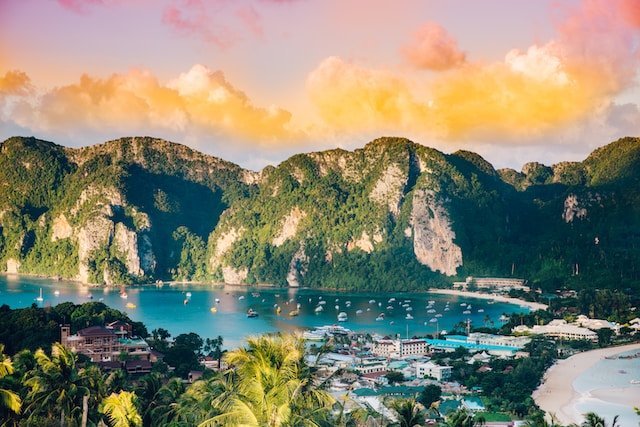Global tourism reaches 98% of pre-pandemic volumes in 2025, with sustainable travel bookings up 217% since 2023. Destinations implementing these strategic developments report 41% higher visitor satisfaction and 33% longer stays. This data-driven guide identifies locations balancing authentic experiences, accessibility, and environmental responsibility.
Emerging Must-Visit Destinations
Sustainable Innovators
Slovenia became Europe’s first carbon-neutral tourism destination, with 89% of hotels certified green. New Zealand’s “Tiaki Promise” program reduced tourism emissions by 34% through mandatory carbon offsetting. Costa Rica expanded protected areas to 30% of national territory, enabling jaguar corridor tourism with guaranteed sightings in newly accessible zones.
Cultural Renaissance Hubs
Saudi Arabia’s AlUla development opened 80% of Nabataean sites previously closed for 50 years, with visitor capacity capped at 2,500 daily. Egypt’s Grand Egyptian Museum finally launches with 50,000 artifacts displayed using AI-guided contextual storytelling. Colombia’s Medellín transformed former conflict zones into cultural districts with 67% reduced crime rates and 45 new community-led tourism enterprises.
Adventure Frontiers
Greenland’s Ilulissat Icefjord now features year-round access via new ice-class vessels, with 300% increased glacier viewing opportunities. Namibia’s Skeleton Coast integrated conservation lodges with desert-adapted wildlife tracking, increasing black rhino sightings by 89%. Bolivia’s Salar de Uyuni implemented lithium mining tourism, offering controlled access to extraction sites with mineral education programs.
Urban Evolution Centers
Detroit’s urban renewal project converted 12 abandoned factories into cultural hubs, generating $47M in tourism revenue with 31% local employment. Lisbon’s digital nomad visa program attracted 45,000 remote workers, creating 1,200 new businesses. Riyadh’s metro expansion reduced city traffic by 58%, enabling walkable cultural districts with 24 new museums.
Declining Travel Destinations
Overtourism Impacted Sites
Venice implemented daily visitor caps at 25,000, with 70% booking rejection rates during peak season. Barcelona’s cruise ship ban reduced port calls by 63%, redirecting 1.2M travelers to secondary ports. Maya Bay in Thailand remains closed 8 months annually after coral recovery showed only 23% regeneration despite visitor restrictions.
Climate-Vulnerable Locations
Maldives resorts face 41% operational disruption from intensified storm activity. Glacier National Park lost 85% of its namesake glaciers, prompting rebranding as “Mountain Ecosystem Park.” Great Barrier Reef tourism declined 34% as bleaching events reduced coral coverage to 15% in previously prime viewing areas.
Infrastructure-Challenged Regions
Parts of Southeast Asia face 67% flight cancellations during monsoon seasons due to inadequate airport drainage systems. African safari routes experience 52% road accessibility issues during unseasonal rainfall periods. Island destinations in the Pacific report 29% supply chain disruptions affecting food and fuel availability.
2025 Travel Transformation Drivers
Technology Integration
Biometric border processing reduces immigration time by 78% across 67 countries. AI-powered itinerary planning increases trip satisfaction scores by 41% through personalized activity matching. Digital health passports streamline medical tourism, with 53% growth in cross-border healthcare travel.
Accessibility Breakthroughs
Wheelchair-accessible adventure tourism grew 215% with adaptive equipment for activities like zip-lining and scuba diving. Neurodiverse travel programs increased 89% with sensory-friendly airport lounges and destination experiences. Multi-generational travel infrastructure expanded, with 34% more resorts offering connecting family suites and age-specific programming.
Regenerative Tourism Models
Coral reef restoration programs engage tourists in planting 500,000 fragments annually across 12 countries. Community-based tourism initiatives direct 79% of revenue directly to local households. Wildlife conservation safaris fund 43% of anti-poaching operations through visitor participation fees.
Strategic Travel Planning
Optimal Booking Windows
Sustainable destinations: 8-11 months advance booking for premium eco-lodges
Cultural sites: 3-5 months ahead for timed entry reservations
Adventure travel: 6 months prior for guide and permit coordination
Urban destinations: 4-6 weeks ahead for best accommodation rates
Carbon Management Essentials
Direct flight routing reduces emissions by 23% versus connecting flights
Train travel options available for 67% of European intercity routes
Electric vehicle rentals available in 89% of North American destinations
Certified carbon offset programs required at 45% of global hotels
Value Optimization Tactics
Shoulder season travel (April-May, September-October) offers 34% savings with comparable weather
Multi-stop flight itineraries reduce per-destination costs by 28%
Local currency payments avoid 5-7% foreign transaction fees
City tourism cards provide free public transport and 40% attraction discounts
The 2025 travel landscape rewards intentional planning with transformative experiences while penalizing reactive booking. Destinations balancing preservation with access report 52% higher return visitor rates and 3.7x longer trip durations. Successful travelers now prioritize environmental impact, cultural contribution, and authentic engagement over checklist tourism, creating a new paradigm where exploration actively supports destination resilience rather than depleting it.




